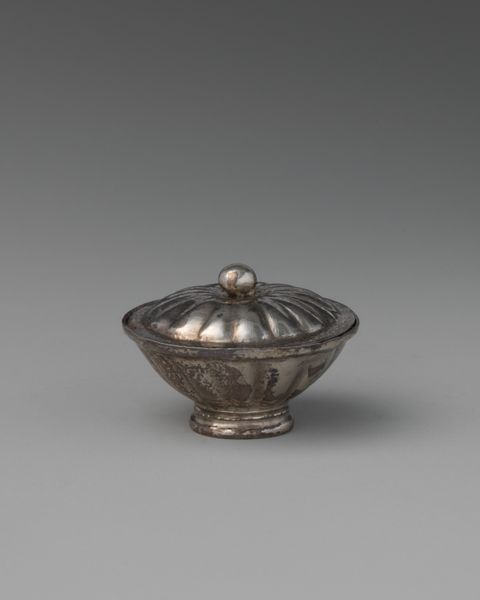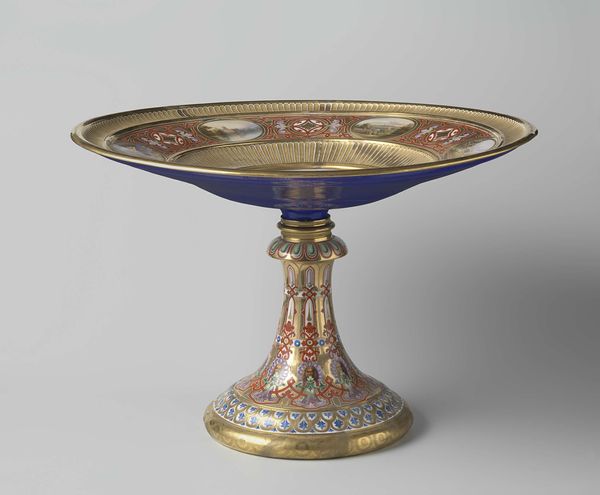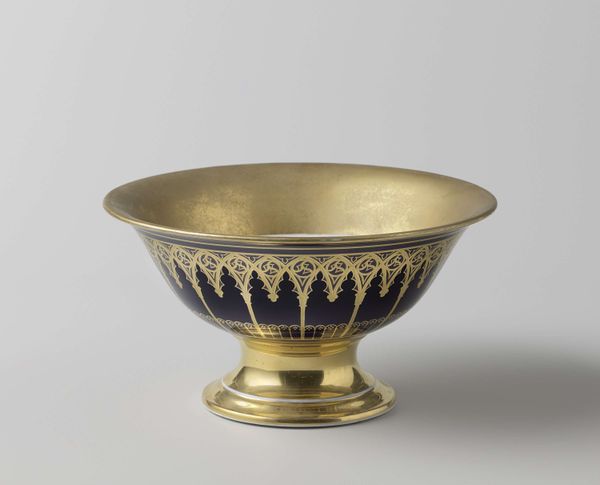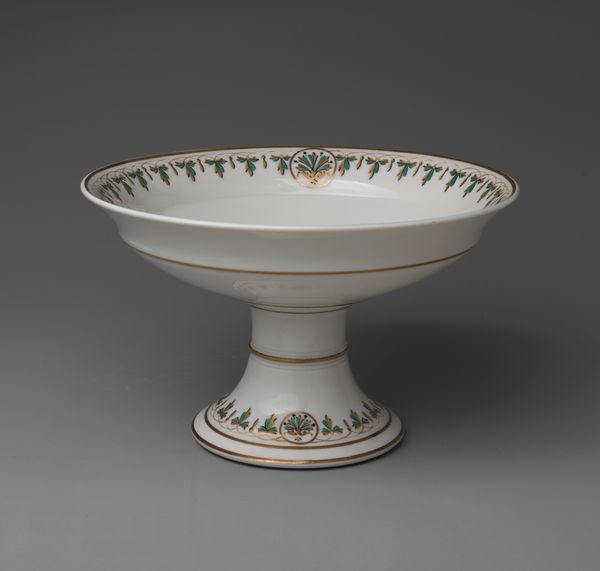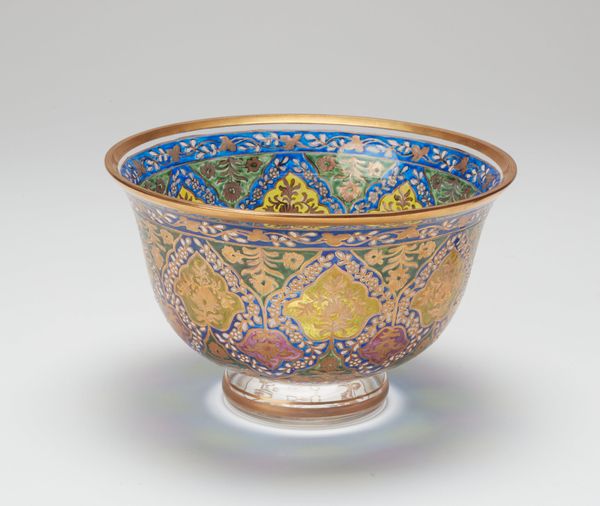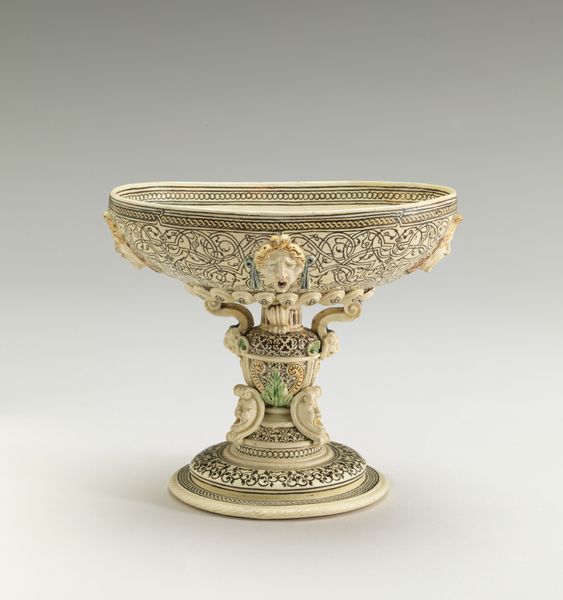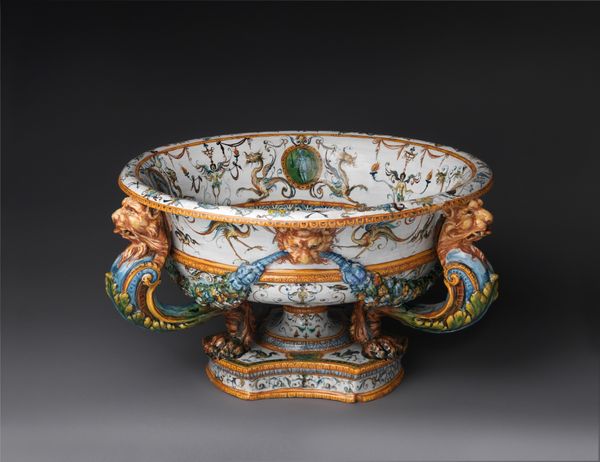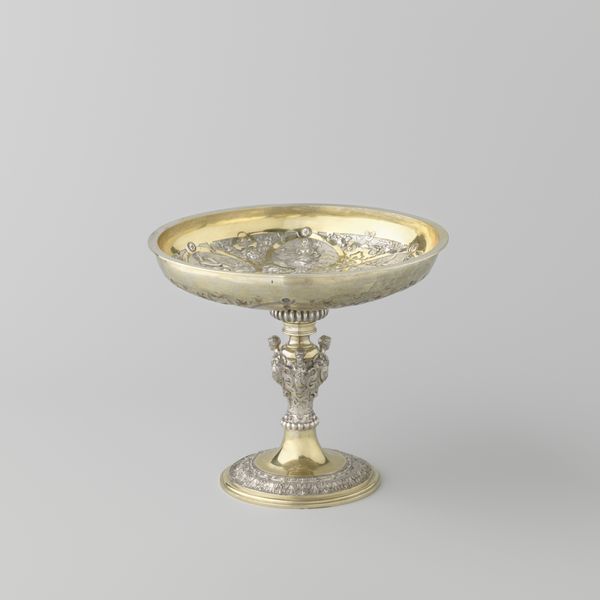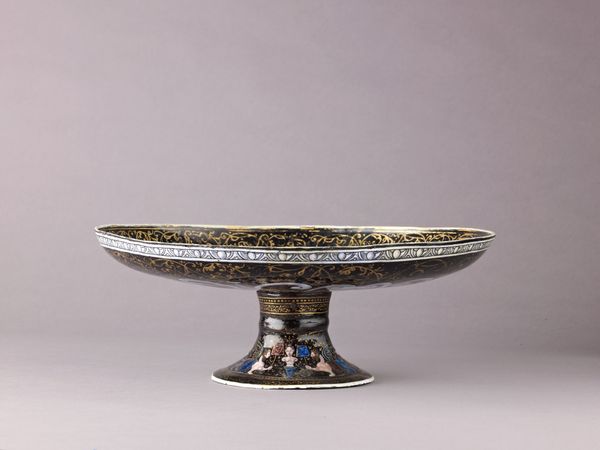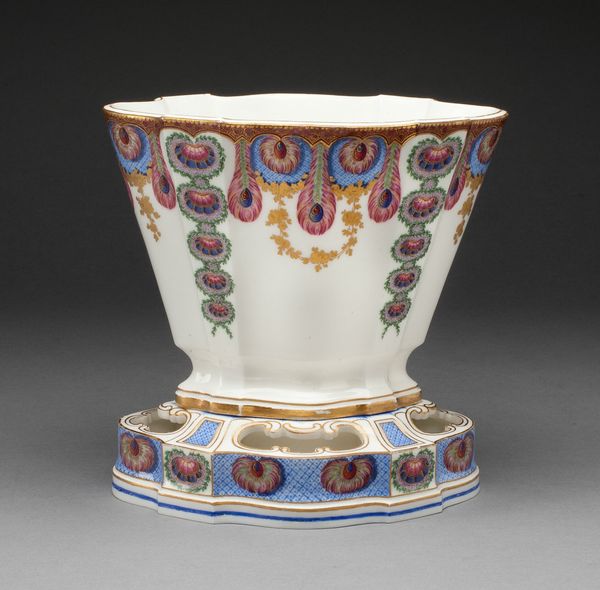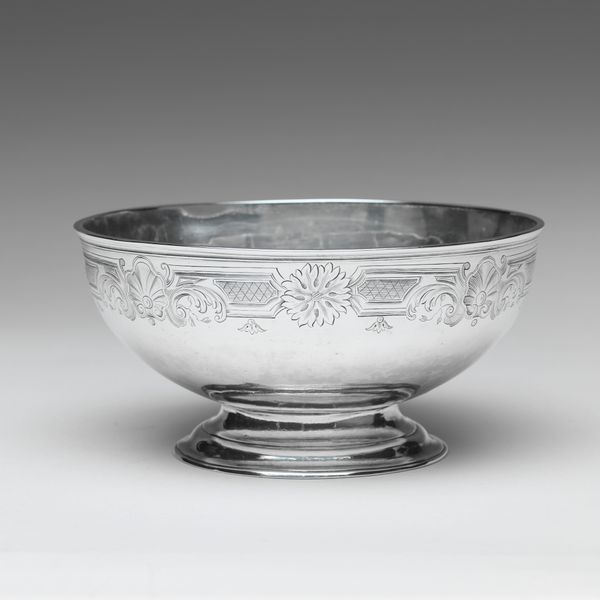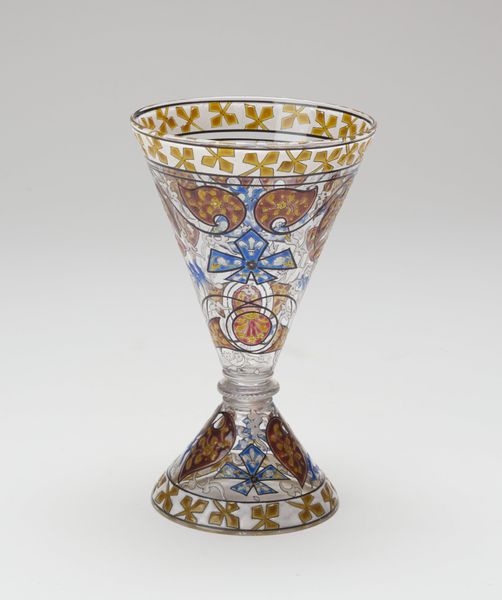
silver, sculpture
#
art-nouveau
#
silver
#
sculpture
#
decorative-art
Dimensions: Overall (confirmed): 5 1/16 × 16 5/8 × 11 5/8 in. (12.9 × 42.2 × 29.5 cm)
Copyright: Public Domain
Editor: Here we have "Compote" by David Andersen, likely crafted between 1895 and 1905. It's made of silver and currently resides in the Metropolitan Museum of Art. It strikes me as very ornamental and almost otherworldly with those bright colors. What’s your interpretation of this work? Curator: This compote immediately pulls me into the societal fascination with nature during the Art Nouveau period, a time when the Industrial Revolution was booming. This piece can be seen as a kind of rebellion. Notice how Andersen rejects the machine-made perfection of industry by embracing organic forms and handmade craftsmanship? Editor: That's interesting! So, it's a deliberate artistic choice. Can you tell me more? Curator: Consider the socio-political implications: who typically owns luxury items like this? This level of craftsmanship signals a yearning for an idyllic, pre-industrial past among the wealthy class. How do you see the animals functioning within that context? Editor: They seem to be part of a desire for an idealized vision of nature, disconnected from the realities of urban life and labor exploitation happening at the time. Almost like a decorative screen. Curator: Precisely. By focusing on the decorative aspect of this silver "Compote," we also see the power dynamics in play and the construction of "nature" as a luxury commodity. These dialogues invite reflection on our values today. Editor: It's fascinating to see how this compote, seemingly just decorative, holds so much more historical context and invites us to reconsider our relationship with both nature and art itself. Curator: Exactly! By engaging critically with the visual and material culture, we unlock new understandings of how we are embedded in history.
Comments
No comments
Be the first to comment and join the conversation on the ultimate creative platform.
